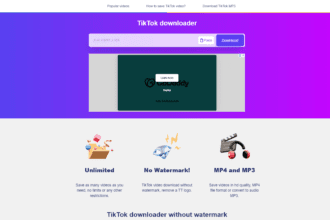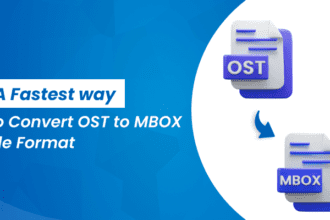Launching an eCommerce app is no longer matter of why, but the question of how to perform it correctly. if an online eCommerce store wants to acquire and maintain customers efficiently, then it should offer the best user experience to the customers and users. However, the key to performing this is by communicating with the customers on all available touchpoints and offering the best experience every time. Nowadays, the most vital touchpoint for all is a seamless mobile experience.

Ecommerce is considered as purchasing and selling products or services over the internet. The applications of eCommerce are widely used in businesses like wholesale, retailer, manufacturing. The most popular eCommerce apps are
- Online Auction
- E-Banking
- Manufacturing
- Online marketing and purchasing
- Finance
- Online publishing
- Retail and wholesale
- Online booking
There have been several companies that provide eCommerce development services for building an excellent app for their business.
Statistics of eCommerce app
- 53% of smartphone users buy from company-specific apps
- The conversion rates from mobile applications are three times higher than mobile sites.
- There are around 82% of Internet users in the US who have used a mobile device to shop online.
- 42% of smartphone users plan to do more shopping from their mobile apps in the coming year
- Mobile shoppers spend twice as much money as other customers
- In 2021, experts estimate that US mobile commerce sales will eclipse $420 billion.
Why build an eCommerce app for your business?
Mobile eCommerce is trending
Mobile devices have taken over the sales eCommerce industry. According to Statista, more than 67% of eCommerce sales come from mobile devices. If mobile sales continue to rise in the coming years, the safest way for the eCommerce site to get its share of the pie with a mobile app.
Well, shopping mobile applications are rising at a pace of 54% year-on-year. This is the highest rate compared to any other app category.
Mobile sales are ruling the field of eCommerce.
The adoption of shopping apps is growing much quicker than any other form of app on the market. So by default, you’ll know that eCommerce applications will lead to mobile commerce sales.
Direct to customer marketing channel
Today, with the aid of mobile gadgets, consumers are connected with brands 24/7. These mobile devices have also changed the way we communicate with brands, gather information, and shop.
Customers are increasingly using mobile devices to shop, and companies must integrate these devices into their marketing strategies.
This tends to improve the way the consumer interacts with the brand. The Mobile Commerce App not only lets users stay connected to the company, but can also be used to effectively deliver discounts, offers, and coupons to customers.
Customer Loyalty
Mobile applications play a vital role in bonding brands with their customers. The days are gone when businesses used to opt for website banners, billboards, roadside banners, or email marketing – to create importance on customers. Currently, mobile eCommerce applications can save companies as they help marketers to know their clients by remaining closer to them with only a ‘finger tap.’
How to create an eCommerce app?
1. Figure out the goals for your eCommerce app
It is necessary to know for what reason are you creating an eCommerce application and how you will measure success. Your KPIs and goals will directly reshape the features you require, your development process, and more. For planning your goals, you should know that how much traffic does your store generates monthly? And how much it is for mobile? What is your mobile conversion rate?
If you are similar to most of the eCommerce stores, then you will end up losing your mobile business to friction. An eCommerce app can assist with this by improving the checkout process and improving conversions at any point of the funnel.
If you’ve identified what you want and need, get specific about how you’re going to measure results.
What are your KPIs and how do you get the information about them?
If you don’t know the answer to this issue, it’s going to be very difficult to succeed with your e-commerce app.
2. For whom are you creating an eCommerce app?
It is essential to know about your audience, as for whom are you creating the mobile application. Recognizing the target audience will enhance your application’s marketing and streamline the development process.
You have to ask questions to yourself like What would be the average age of my audiences? What do they read? How are they finding us? and what are their interests?
For example, a B2B retailer might be more concerned about repeat purchases & quick checkouts. Whereas a fashion retailer may emphasize lookbooks and market to an audience through App store optimization. Choose the right target group and move on.
3. Pick the appropriate technology
Now that you have cleared the first two steps, it’s time to move to pick the best technology for your mobile app. There are basically two flavors from which you can pick: Native Apps and PWAs i.e, Progressive Web Apps.
Native applications are normally downloaded on the app store & stored on a user’s phone. Native applications are built separately for iOS and Android. As a result of this, native apps can make full use of all the features a mobile phone has to provide. Native apps are fast, intuitive, and give an optimized experience.
Whereas PWAs are next-gen websites, that provide a similar type of speed, performance, and interactivity as a native app. However, there won’t be a download in the app store. This would be a good option if you have huge traffic on your brand website or your budget is limited.
4. List of requirements for creating an eCommerce app
After all these processes, it’s time to get your team together and build the list of specific requirements for your app. I’ve mentioned some of the key ideas that which customers love to see in any eCommerce app:
- Easy to checkout
- Multiple payment channel options
- Wishlist
- Social Media Integration
- Push messages
- Custom design elements
- Review system
Once, you have crafted and prepared the list of requirements for your eCommerce mobile app, move on to the next step.
5. Choose the right team, process, and budget
The significant question here for you will be: How much money, resources, and time you want to invest in this application? How much flexibility you would require while including new features, sending push messages, modifying your design, etc?
If you are looking to build an eCommerce app for your business, then you should look further to hire an eCommerce app development company or team for creating a brand new application. With the help of a hired company, you will be able to build anything you want and can integrate with any existing system. However, the more advanced the application will lead to a costly development process. You have to simply make guidelines and timelines of the reports which will be shared with an app development company. This will help you in tracking the progress of your application easily.
6. Market your app
Marketing is an essential strategy for spreading your brand awareness to specific target audiences. It won’t be great if the best eCommerce app doesn’t receive any product views, downloads, or purchases. right?
Conclusion
Now you are aware of how to build a successful eCommerce application for your business. You can always connect with us in case if you need any assistance, marketing efforts along building an eCommerce mobile app.








